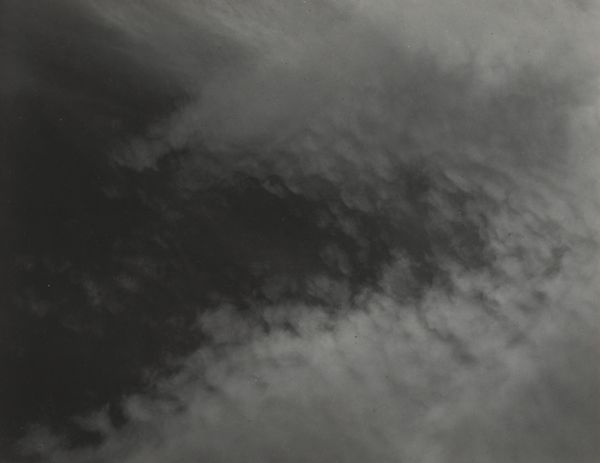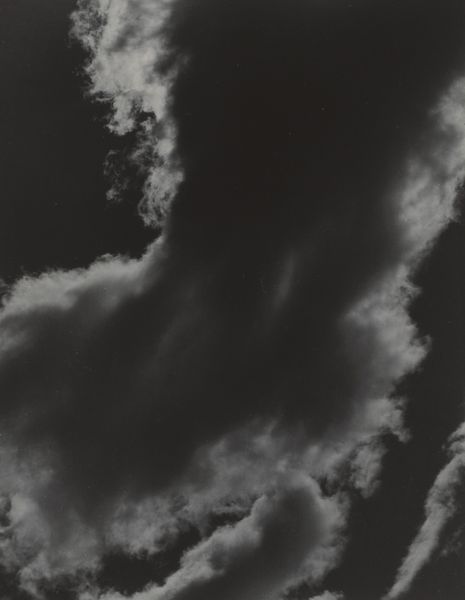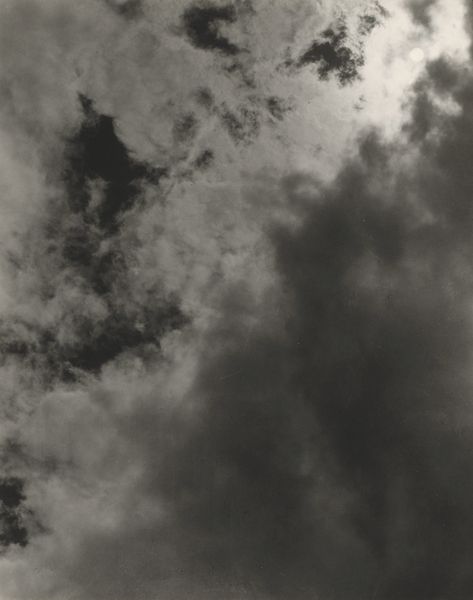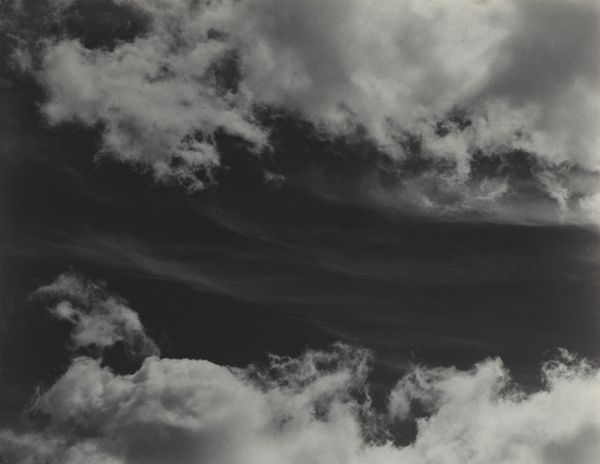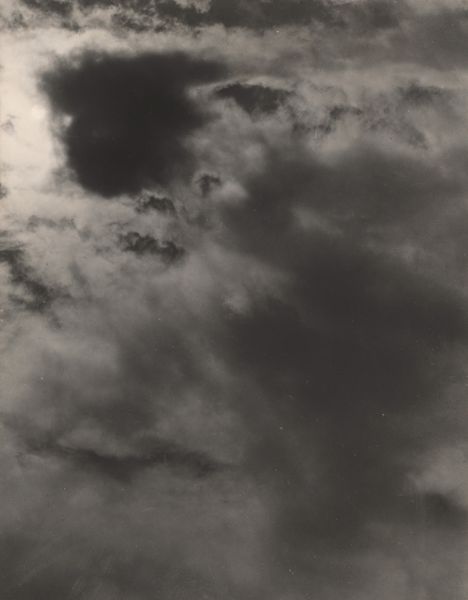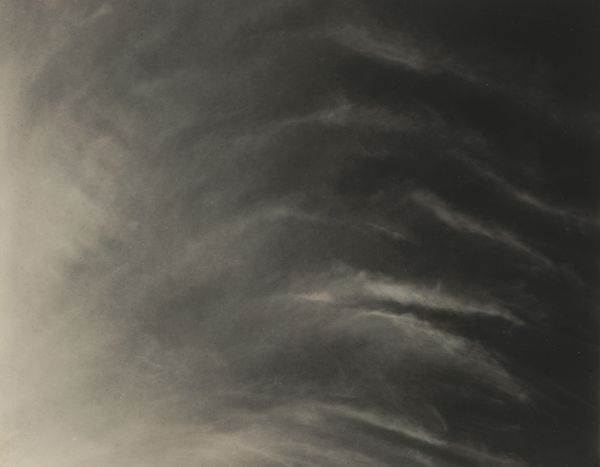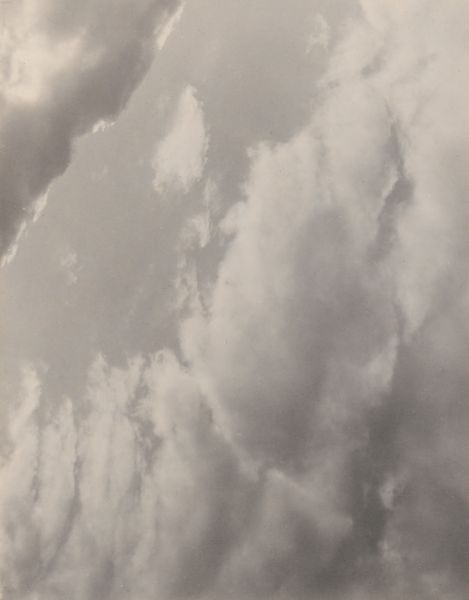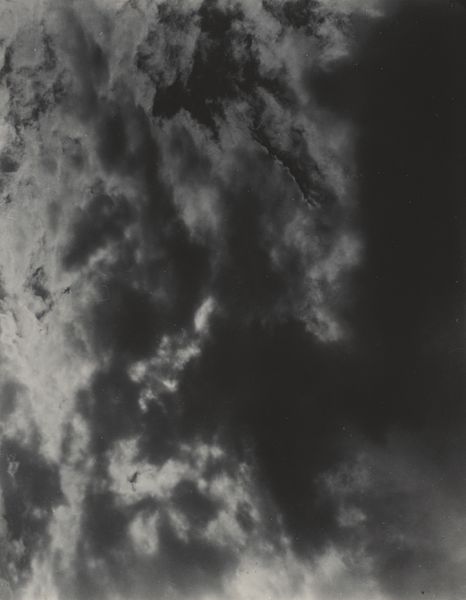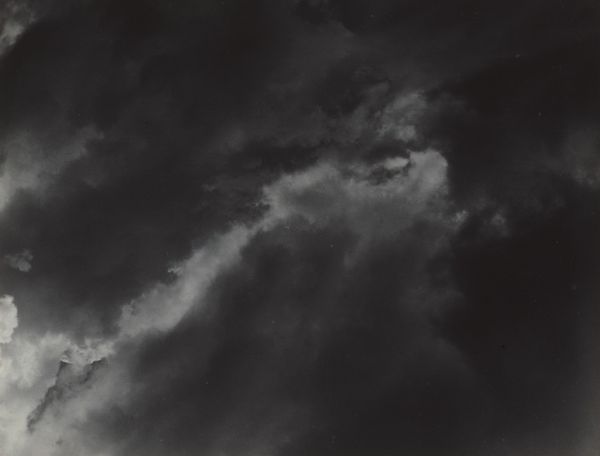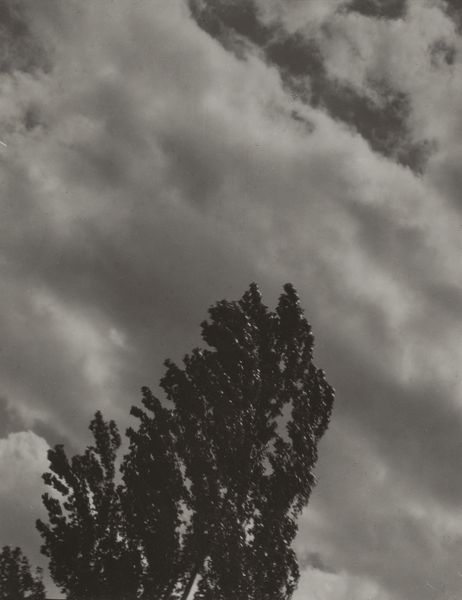
Dimensions: sheet (trimmed to image): 11.8 x 9.2 cm (4 5/8 x 3 5/8 in.) mount: 34.5 x 27.4 cm (13 9/16 x 10 13/16 in.)
Copyright: National Gallery of Art: CC0 1.0
Curator: Here we have Alfred Stieglitz's photograph "Equivalent," created around 1926. It is a black and white image of clouds filling the frame. Editor: My first impression is one of transience and the ethereal. The swirling, shifting forms of the clouds create a sense of constant movement, a feeling of the ungraspable. There’s also a subtle melancholy woven through the image, perhaps born from the stark contrast. Curator: I agree, and Stieglitz saw them as so much more. He deliberately chose clouds to evoke emotions and inner states, aiming to demonstrate that a photograph could be as expressive as painting or music. His Equivalents are viewed today as a radical move, as his turn toward abstraction mirrored a shift in thinking around him. He believed they captured something universally human beyond subject matter. Editor: Stieglitz's departure toward abstraction reflects a break from earlier notions of art reflecting visible reality; it is almost as if the cloud form is only raw material. It begs the question, how could everyday materials symbolize the social and emotional reality of early 20th century living? Curator: Precisely! Think about how these photographs broke down barriers by asking the public to engage in different modalities. Stieglitz's approach challenged existing notions of representation within and beyond the art world and pushed against expectations. Editor: It's important to also note the mechanical means behind capturing the work itself. Photography changed the business of representing life by opening avenues that weren’t available previously. In this way, “Equivalents” is an early example of the industrial complex, where a machine stands behind art, adding to the complexity of art production. Curator: Looking at it from today’s vantage point, the idea that even the sky becomes a terrain for projecting one’s interior world—we see this mirrored across various identity politics today. I find it fascinating how forward-thinking his method was! Editor: Absolutely! Thinking about the social life of objects reminds me that everything from art supplies to technology has a broader connection. The legacy of cloud imagery opens different lanes for interpreting cultural themes through its industrial history. Curator: His search for equivalents transformed photography from a mere recording tool into a medium capable of expressing complex emotions and abstract ideas, laying the groundwork for generations of artists to come. Editor: It is compelling how these early methods for viewing photographs challenged people's conceptions and created dialogues across multiple facets. Thanks for pointing that out.
Comments
No comments
Be the first to comment and join the conversation on the ultimate creative platform.
